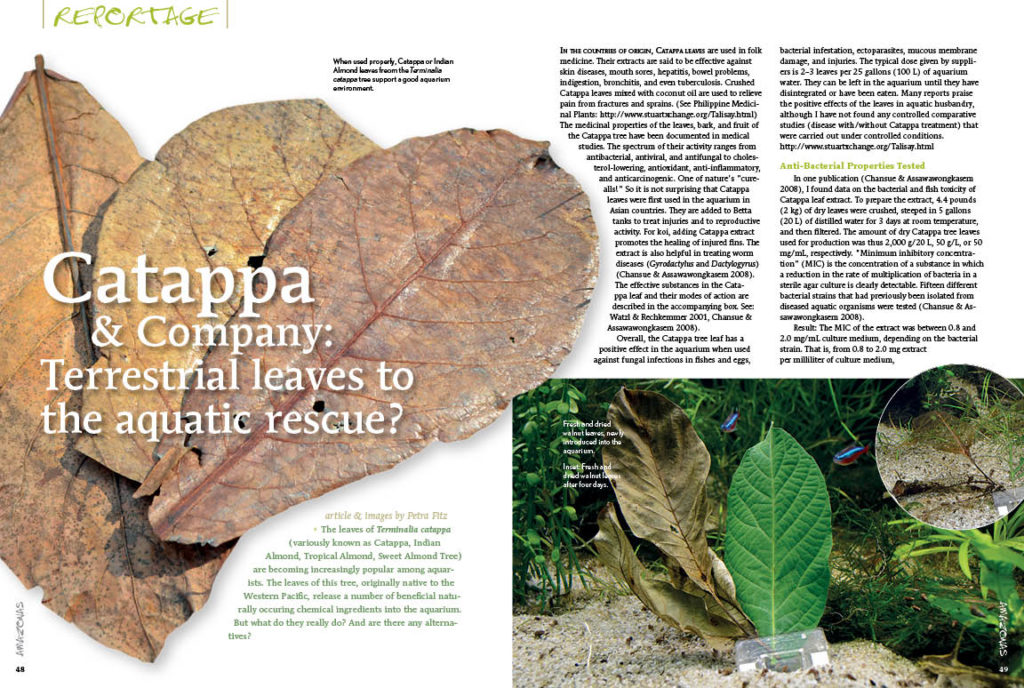 Catappa & Company—
Catappa & Company—
Terrestrial leaves to the aquatic rescue?
By Petra Fitz
Full article in AMAZONAS, May/June 2018
The leaves of Terminalia catappa (variously known as Catappa, Indian Almond, Tropical Almond, Sweet Almond Tree) are becoming increasingly popular among aquarists. The leaves of this tree, originally native to the Western Pacific, release a number of beneficial naturally occuring chemical ingredients into the aquarium. But what do they really do? And are there any alternatives?
References
Borisutpeth, P., C. Hanjavanij, A. Luangpirom, and O. Lawhavinit. 2001. Acute effect of tannic acid on intestine, liver and kidney of Oreochromis niloticus (L.). KKU Sci J 31 (3): 157–66.
Chansue, N. and N. Assawawongkasem. 2008. The in vitro Antibacterial Activity and Ornamental Fish Toxicity of the Water Extract of Indian Almond Leaves (Terminalia catappa Linn.). KKU Vet J 18 (1): 36–45.
Fitz, P. 2014a. Wenn Fische Schnupfen haben—Hausmittel bei leichten Krankheitsbildern. AMAZONAS 55, 10 (5): 64–70.
———. 2014b. Brennnessel, eine hervorragende Futterpflanze. AMAZONAS 55, 10 (5): 6–7.
Major, H. 2002. Untersuchungen zur Wirkungsweise von Birkenblättern (Betulae folium) und phenolischer Verbindungen, unter besonderer Berücksichtigung der Beeinflussung von Metallopeptidasen. Dissertation an der Humboldt-Universität zu Berlin.
Watzl, B. 2001. Saponine. Charakteristik, Vorkommen, Aufnahme, Stoffwechsel, Wirkungen. Ernährungs-Umschau 48 (6): 251–3.
Watzl, B. and G. Rechkemmer. 2001. Flavonoide. Ernährungs-Umschau 48 (12): 499–502.





